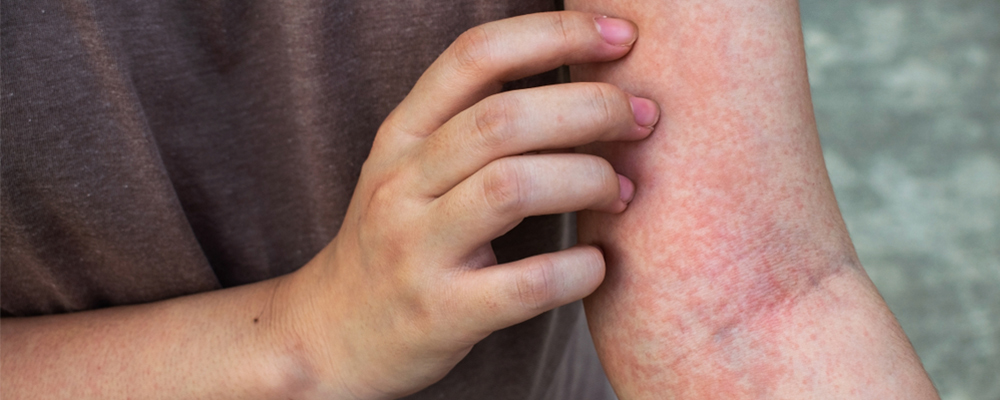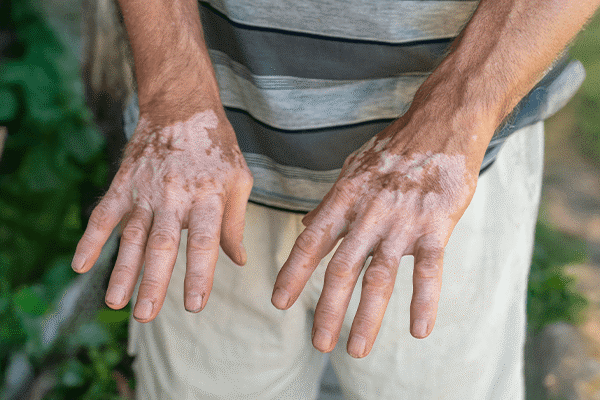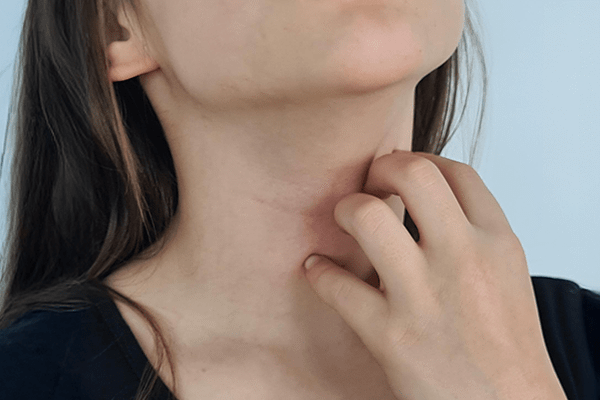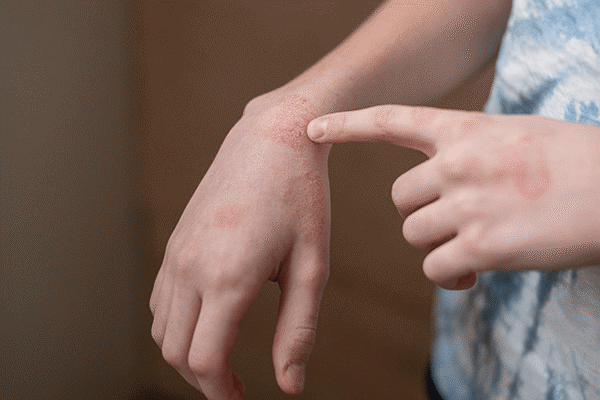Updated on June 26, 2023
Introduction
A rash is defined as a change in the appearance of the skin, which can include changes in texture (e.g., rough or smooth) and color. Itchy, warm, dry, cracked, blistered, lumpy, or painful skin may also develop because of the rash. A blanching rash refers to skin rashes or eruptions that fade or blanches when pressure is applied to it. The blanching occurs due to the temporary reduction or interruption of blood flow to the affected area.
There are numerous causes for a blanching rash, depending on where it is located, other symptoms one may be experiencing, what they may have been exposed to, and any family history. It is therefore important to be aware of where the rash first appears, how it changes or spreads, and to recognize symptoms and signs that indicate that medical attention must be sought immediately.
Dermatology clinical trials are essential for exploring potential breakthrough treatments for conditions such as blanching rash. These trials can provide valuable insights to the medical community, enhancing their understanding of the condition and unveiling previously unexplored treatment alternatives.
This article will discuss non-blanching rash, blanching rash, causes, and treatment options available for adults and children.
What is a Blanching Rash?
Skin, when pressed longer than usual, becomes white or pale, causing a blanching rash. This indicates that normal blood flow to a specific area does not return quickly. A blanching test can be performed without the use of a diagnostic tool. A healthcare provider presses the fingertips against the skin for a short period of time, then quickly withdraws them to see if whitening occurs.
Diascopy is another but slightly more advanced technique for checking blanched rashes than using the fingertips. This method of determining blood flow to a skin area entails several steps, including:
- Placing a piece of clear glass (such as a microscope glass slide) or clear plastic against the skin to see if it blanches and fills properly under pressure.
- Viewing the color of the skin under pressure by pressing the glass with the fingertips.
- Withdrawing the fingers.
- Checking for blanching; blanching occurs when the area under pressure turns whitish-colored but does not return to its original color (such as the surrounding tissue).
What is a Non-Blanching Rash?
A non-blanching rash does not fade under pressure. These rashes are caused by bleeding beneath the skin. While they are not always serious, they can sometimes be indicative of serious conditions such as meningitis or sepsis.
What Causes a Blanching Rash?
Blanching of the skin, or the temporary loss of color, can be caused by a variety of factors. Blanching occurs because of a temporary decrease or interruption in the blood flow to the affected area. Here are some of the most common causes of blanching rash:
-
Pressure:
Blanching can be caused by applying pressure to the skin. Tight clothing, tight bandages, or sitting or lying in one position for an extended period can all cause this.
-
Cold Temperature:
Extreme cold temperatures can cause vasoconstriction, in which blood vessels narrow, reducing blood flow and causing skin blanching. It is a natural protective response to keep the body warm.
-
Allergic Reactions:
Certain allergic reactions, such as hives or angioedema, can result in skin blanching. This is due to the release of histamine, which can cause blood vessels to dilate or constrict, resulting in skin color changes.
-
Raynaud’s Disease:
This is a condition in which the blood vessels in the fingers and toes constrict in response to cold or stress. The affected areas may blanch as a result of the disease.
-
Vasospasm:
This is a sudden constriction of blood vessels that can happen because of cold, stress, or certain medical conditions. It may cause skin blanching in the affected area.
-
Medication Side Effects:
Some medications, particularly vasoconstrictors or drugs that affect blood circulation, can cause a blanching rash as a side effect.
-
Circulatory Disorders:
Circulatory disorders such as peripheral artery disease (PAD) or deep vein thrombosis (DVT) can reduce blood flow to the extremities and cause skin blanching.
Several skin conditions can cause skin blanching:
- Frostbite occurs when the tissues of the skin freeze, resulting in a loss of blood flow.
- Pressure sores can be detected early on due to skin blanching, which can indicate poor blood flow. Blanching is typically the first sign of impending ulcer formation.
- Erythema is a type of skin redness that can be bleached. It is seen in several inflammatory skin disorders.
- Blood vessels on the skin include vascular lesions such as spider veins and can also cause skin blanching. These can be seen in a variety of conditions, including rosacea, sun-damaged skin, and liver disease. The skin of pregnant women may also exhibit this condition.
Also Read: What Cancer Can Cause Itchy Skin? Signs You Should Know
What are the Symptoms of a Blanching Rash?
The symptoms of a blanching rash can vary depending on the underlying cause. Here are some common features and associated symptoms:
-
Red or pink discoloration:
The rash typically appears as red or pink patches or spots on the skin.
-
Blanching:
When pressure is applied to the affected area, the color of the rash fades temporarily. It may turn pale or white, and when the pressure is released, the normal color of the skin returns.
-
Itching or irritation:
The rash may be accompanied by itching, which can range from mild to severe.
-
Variable size and shape:
The rash may appear as individual spots or merge to form larger patches. It can be irregularly shaped or have a well-defined border.
-
Distribution:
The rash can occur in localized areas or spread across larger areas of the body. The distribution may vary depending on the cause and can range from symmetric patterns to random allocation.
-
Associated symptoms:
Depending on the underlying cause, additional symptoms may be present. These can include fever, joint pain, headache, sore throat, cough, abdominal pain, diarrhea, or other systemic symptoms.
How is Blanching Rash Treated in Adults and Children?
The treatment for a blanching rash depends on its underlying cause. It’s important to identify and address the root cause to effectively manage the rash. Here are some general approaches to treating a blanching rash:
-
Allergic reactions:
If the rash is caused by an allergic reaction to a specific substance or medication, the first step is to avoid further exposure to the allergen. Over-the-counter antihistamines can help relieve itching and reduce the rash. In severe cases, a doctor may prescribe stronger medications or recommend allergy testing and immunotherapy.
-
Infections:
If the rash is due to a viral or bacterial infection, treatment focuses on addressing the underlying infection. This may involve antiviral or antibiotic medications, depending on the specific pathogen. Symptomatic relief for itching or discomfort can be achieved with over-the-counter creams or ointments.
-
Autoimmune conditions:
Certain autoimmune conditions can cause blanching rashes. Treatment typically involves managing the underlying autoimmune disease with medications such as corticosteroids, immunosuppressants, or disease-modifying antirheumatic drugs (DMARDs). The goal is to control the immune system and reduce inflammation.
-
Symptomatic relief:
Regardless of the cause, symptomatic relief measures can help alleviate the discomfort associated with the rash. These may include applying cool compresses to the affected area, taking over-the-counter pain relievers (if appropriate), using soothing lotions or creams, and maintaining good skin hygiene.
It’s important to consult a healthcare professional for an accurate diagnosis and appropriate treatment. A specialist will evaluate the rash, consider the medical history and symptoms, and recommend the most suitable treatment plan.
Outlook:
Blanching of the skin, or blanching rash occurs when the skin remains pale after being pressed for a longer period than usual. It can have various causes, including allergic reactions, viral or bacterial infections, autoimmune conditions, medication side effects, or other medical conditions. Certain tests are performed to help identify skin conditions such as spider veins, frostbite, and Raynaud’s syndrome. Depending on the underlying cause, the treatment for blanching skin will vary greatly. It is recommended to consult a healthcare professional for proper evaluation and diagnosis.
Also, read…






